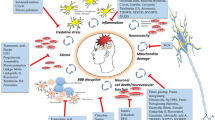Abstract
Persistent vegetative state (PVS) is a clinical condition wherein the cerebral cortex loses its function although brain stem function remains relatively intact. It has high mortality and disability rates. Although treatment for PVS is extensively studied in developed countries, little breakthrough has been made. In China, many PVS patients who were treated with traditional Chinese medicine (TCM) and acupuncture therapy were reported to have regained consciousness. In our department, we have been investigating TCM diagnosis and treatment methods for PVS for many years and have summarized a set of curative programs. Our patient is a male and 5 years and 3 months of age. He had traumatic brain injury and had been unconscious for three months on admission. Considering his condition, we adopted Xingnao Kaiqiao acupuncture, oral Angong Niuhuang Wan, and Xingnaojing intravenous drip. After the 50-day treatment, his health significantly improved and is nearly similar to that of a healthy child, indicating that the treatment is effective for PVS. Therefore, we decided to report the case and treatment methods.
Similar content being viewed by others
References
Qiao DC, Zhang QZ, Feng MC. The discussion of clinical diagnostic criteria for psychopath with persistent vegetative state. Natl Med J China (Zhonghua Yi Xue Za Zhi) 1998; 78(3): 167 (in Chinese)
The Academic Committee of Clinical Medicine of Institute of Hospital Management of the Ministry of Health. The advice of revising and perfecting the diagnosis and scoring criteria of PVS. The Ministry of Health, the Hospital Management Institute of Clinical Medicine Academic Committee Meeting. Nanjing: Nanjing University Press, 2001 (in Chinese)
Zhang ZB, Wang YY, Lue AP. On combined syndrome differentiation of essential elements of syndrome and syndrome target point corresponding syndromes. J Tradit Chin Med (Zhong Yi Za Zhi) 2006; 47(7): 483–485 (in Chinese)
Liu HZ, Ma ZW, Liu Y, He YB, Ding Y, Pan W, Zhen LC. Therapeutic effect of Xingnaojing injection on secondary brain injury. Chin J Experimen Tradit Med Formula (Zhongguo Shi Yan Fang Ji Xue Za Zhi) 2011; 17(15): 248–250 (in Chinese)
Zheng TJ. The curative effect observation of using Angong Niuhuang Wan on the patients in coma with craniocerebral trauma. J Emerg Tradit Chin Med (Zhongguo Zhong Yi Ji Zheng) 2012; 21(2): 294 (in Chinese)
Chen X, Li SR, Gao QM, Huang G, Zhang M, Feng Q, Su TS, Han ZC, Song HJ. The clinical research of using integrated program of TCM in awaking up persistent vegetative state. Acta Chin Med Pharm (Zhong Yi Yao Xue Bao) 2012; 40(5): 71–74 (in Chinese)
Lu SJ, Huang LP, Su JL, Lin JH. The clinical observation of borneol aerosol inhalation in awaking up severe craniocerebral injury. Chin Health Care Nutri (Zhongguo Bao Jian Ying Yang) 2013; 2(11): 167–168 (in Chinese)
Zhu CT, Shi N. Observations on the efficacy of brain-activating and orifice-opening acupuncture in treating a persistent vegetative state. Shanghai J Acupunct Moxibustion (Shanghai Zhen Jiu Za Zhi) 2008; 27(9): 15–17 (in Chinese)
Huang Xh, Zhong PC. Observation of the effect about suing acupuncture in awaking up the patient with PVS. J Inf Tradit Chin Med (Zhongguo Zhong Yi Yao Xin Xi Za Zhi) 2009; 16(7): 71–72 (in Chinese)
Chen LP, Sheng YT, Liu J. Electro-nape-acupuncture combined with Xingnao Kaiqiao acupuncture in awaking up PVS: 30 cases clinical curative effect observation. Guide Chin Med (Zhongguo Yi Yao Zhi Nan) 2008; 6(2): 207–208 (in Chinese)
Shi YH, Kang J, Luo YH. Effect of injection of consciousnesspromoted drug through carotid artery on persistent vegetate state. Chin J Rehabil Theory Pract (Zhongguo Kang Fu Li Lun Yu Shi Jian) 2005; 11(2): 137–138 (in chinese)
Wang QS. The 52 cases curative effect observation of using hyperbaric oxygen treatment on PVS. Chin J Neurosurgi Dis Res (Zhongguo Shen Jing Wai Ke Ji Bing Yan Jiu Za Zhi) 2003; 2(2): 175–176 (in Chinese)
Wu WB, Liang W, Cao LS, Yao LZ. JIN’S 3 needling in treating PVS caused by brain injury:18 cases report. Chin J Clin Rehabil (Zhongguo Lin Chuang Kang Fu) 2002; 7(31): 421 (in Chinese)
Wang JD. Dermal needle treatment on traumatic coma. Shanghai J Acupunct Moxibustion (Shanghai Zhen Jiu Za Zhi) 1994; 13(1): 12 (in Chinese)
Li YH. The study of three different acupuncture methods in cerebrovascular accident sequelae patients. Chin Acupunct Moxibustion (Zhongguo Zhen Jiu) 1993; 13(4): 37 (in Chinese)
Li ZR, Zhu LL. Dynamic observation of EEG and REG of stroke patients after acupuncture. Jiangsu J Tradit Chin Med (Jiangsu Zhong Yi Yao Za Zhi) 1990; 11: 27 (in Chinese)
Zhang ZL. The clinical study of acupuncture to strengthen the effect of lowering cranial pressure of stoke patients. Chin Acupunct Moxibustion (Zhongguo Zhen Jiu) 1995; 15(4): 123 (in Chinese)
Zhou YQ. Gu ZX, Zheng J. The influence of acupuncture on cerebral oxygen saturation of headache sufferers. Chin Acupunct Moxibustion (Zhongguo Zhen Jiu) 1998; 18(7): 3995 (in Chinese)
Hu GQ, Tian F. The influence of acupuncture on brain free radical pathology and ultrastructure of cerebral ischemia and ischemiareperfusion rabbit. Chin Crit Care Med (ZhongguoWei Zhong Bing Ji Jiu Yi Xue) 1996; 8: 5–7 (in Chinese)
Author information
Authors and Affiliations
Corresponding author
Rights and permissions
About this article
Cite this article
Song, H., Chen, X., Yu, Y. et al. Xingnao Kaiqiao acupuncture combined with Angong Niuhuang Wan for a patient under persistent vegetative state: a case report. Front. Med. 12, 334–339 (2018). https://doi.org/10.1007/s11684-017-0539-2
Received:
Accepted:
Published:
Issue Date:
DOI: https://doi.org/10.1007/s11684-017-0539-2




